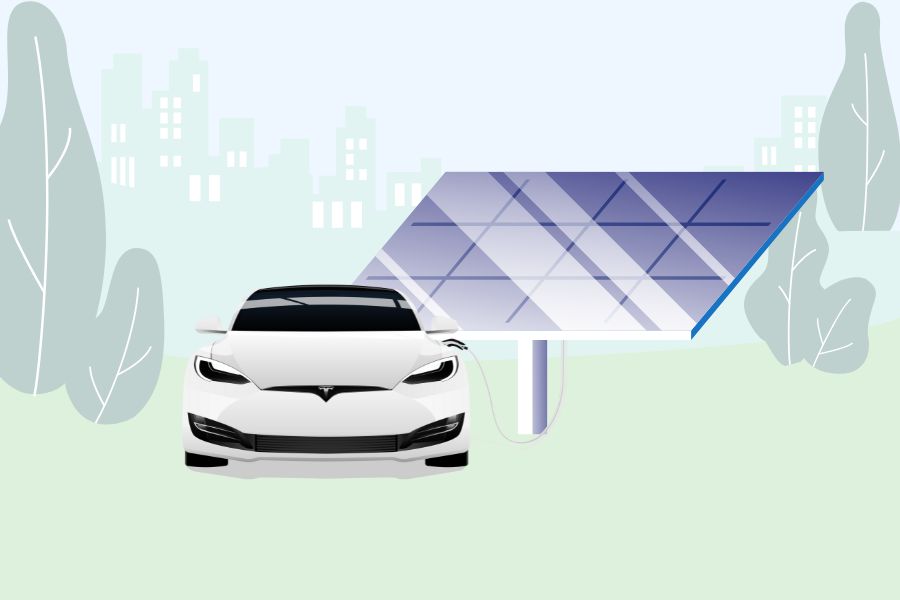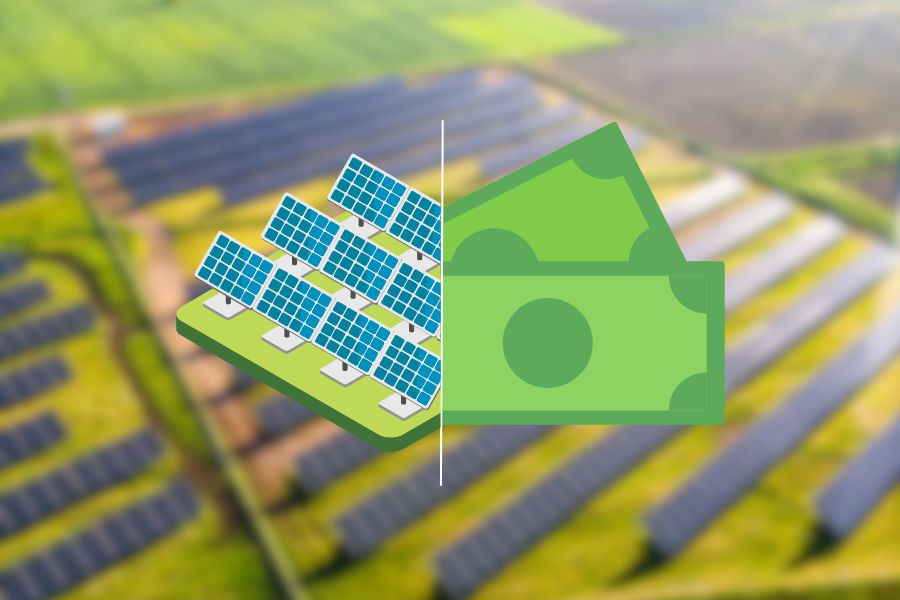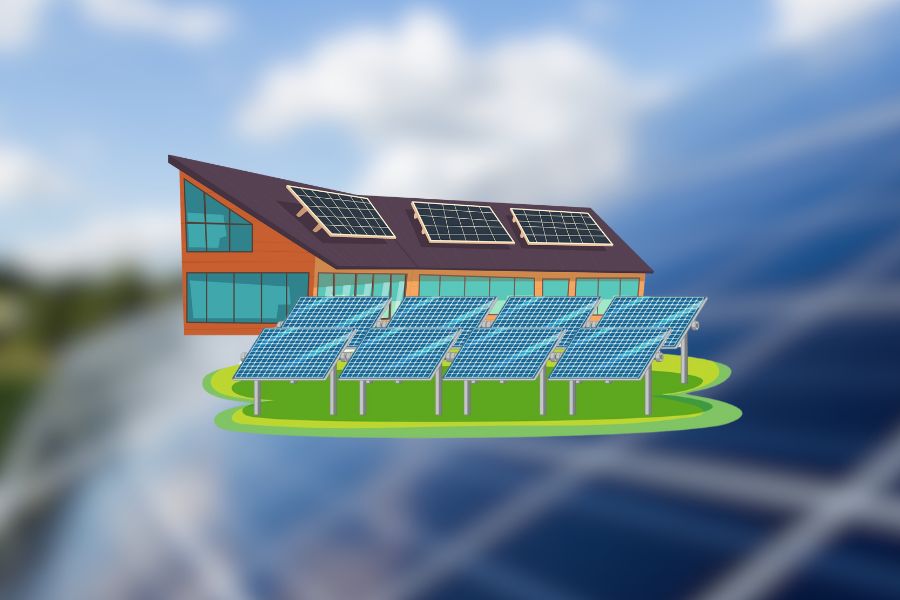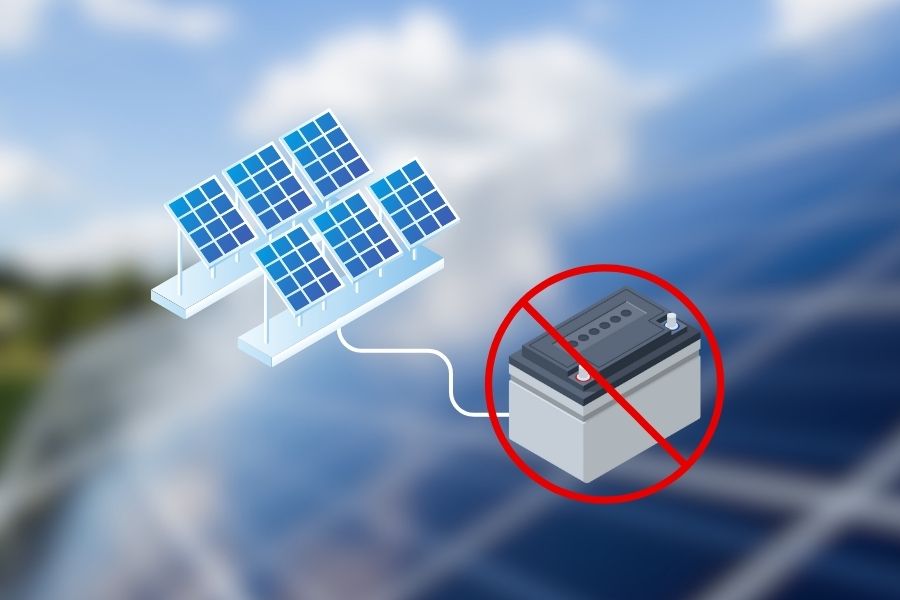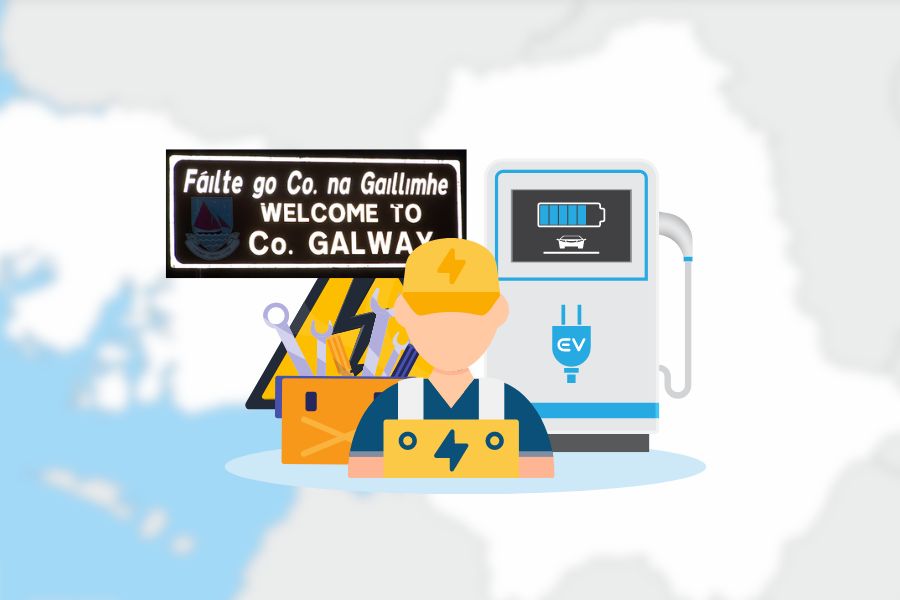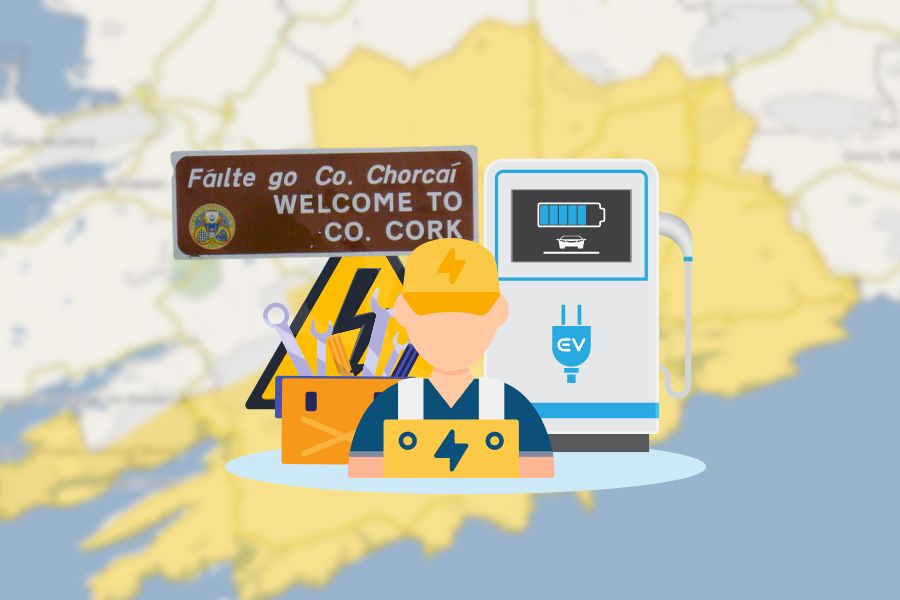The number of solar panels needed to charge a Tesla electric vehicle hinges on several factors including the model of the Tesla, the solar panel’s wattage, and daily sunlight hours.
On average, charging a Tesla Model S with a 100kWh battery, for instance, may require a solar setup with around 34-40 solar panels of 300W each.
However, factors like solar panel efficiency, your location’s solar irradiance, and the car’s energy consumption rate can influence this count, thereby necessitating a careful evaluation of energy usage and available solar power.
Can You Charge Your Tesla With Solar?
Yes, you can charge your Tesla with solar power! It’s an excellent way to save money in the long run and take a significant step toward fully electrifying your home. Charging an electric vehicle (EV) like a Tesla with solar energy is sustainable and practical.
If you already own a Tesla but have yet to install solar panels at your home, don’t worry. Your solar installer can customize your home solar system to accommodate the additional electricity demand of charging your Tesla. Just inform your installer about your plans; they will size your design accordingly.
On the other hand, if you’re considering going solar and have plans to purchase a Tesla in the future, inform your installer during the solar installation consultation. This way, they can design a solar system considering your future EV charging needs.
Even if you already have solar panels powering your home but are concerned about the increased electricity demand from your new Tesla, there’s a solution. You can connect with your solar installer to discuss expanding your solar system to meet the additional energy requirements. The combination of driving a Tesla and utilizing solar power perfectly matches!
Charging your Tesla with solar panels is made possible by the ability of electric vehicle batteries to store solar energy. If you already have solar panels installed for your home, you can use them to charge your Tesla vehicle seamlessly.
How Much Electricity Does a Tesla Model 3 Need to Charge?

Charging a Tesla Model 3 requires approximately 50 kilowatt-hours (kWh) of energy. This energy consumption represents the amount needed to charge the car from 0% to 100%. It’s important to note that the specific energy requirements can vary among electric vehicle models.
Several factors come into play when considering solar panels as a charging solution for your Tesla Model 3. One must evaluate the efficiency of solar panels, the capacity of the Tesla battery, and the desired charging capacity to determine the number of solar panels needed.
Solar panel efficiency is crucial in calculating the number of panels required. Solar panels have varying efficiencies, typically 15% to 20%. Higher-efficiency panels generate more electricity per square foot, allowing for the production of more energy.
One must consider the average daily sunlight, panel efficiency, and the desired charging capacity to estimate the number of solar panels needed. A professional solar installer can assess these variables and provide an accurate calculation.
How Many Solar Panels Do You Need to Charge a Tesla?
On average, a Tesla Model 3 has a battery capacity of around 75 kWh (kilowatt-hours) and can travel approximately 250 miles on a full charge. Let’s assume you want to fully charge the Tesla Model 3 battery using solar power to simplify the calculation.
The amount of energy solar panels generate depends on the panel’s wattage, efficiency, and the number of sunlight hours a day. Let’s assume you have solar panels with a combined wattage of 300 watts per panel, and they have an efficiency of 20%.
To determine the number of solar panels needed, you can use the following formula:
Number of solar panels = (Tesla battery capacity in kWh) / (Panel wattage in kW x Panel efficiency)
Plugging in the values, we get:
Number of solar panels = 75 kWh / (0.3 kW x 0.2) = 125 panels
Remember that this is a rough estimate, and the number of panels required may vary depending on the specific conditions mentioned earlier. Additionally, it’s worth noting that it’s only sometimes necessary to fully charge your Tesla using solar power alone. You can supplement solar charging with grid electricity if needed.
Cost per kWh to Charge a Tesla Model 3 With Solar Panels

Ireland’s average residential electricity rate is approximately €0.20 to €0.25 per kWh. However, when you generate electricity with solar panels, your cost per kWh will depend on the upfront installation costs and ongoing maintenance expenses.
To calculate the cost per kWh for charging your Tesla Model 3 with solar panels, you should understand how much energy your household consumes and can also consider the following:
- Determine the solar panel installation cost, including associated expenses such as permits, equipment, and installation fees.
- Divide the total cost by the expected lifespan of the solar panels. Typically, solar panels have a lifespan of around 25-30 years.
- Calculate the average annual energy production of your solar panels. One can obtain this value from the manufacturer or installer, usually in kWh.
- Divide the total cost by the average annual energy production to get the price per kWh.
Remember that this calculation provides an estimate and doesn’t account for factors such as maintenance costs, degradation of panel efficiency over time, or the variability of sunlight throughout the year.
How Much Would It Cost to Charge a Tesla 3 With Grid Electricity?
The standard Model 3 costs about 10 euros to fully charge the battery using grid electricity.
The cost per mile for the standard Model 3 is approximately 0.040 euros, which translates to 4.02 euros for every 100 miles driven.
Charging the Performance and Long Range models would cost around 12 euros using grid electricity.
Please note that these values are approximate and may vary depending on factors such as electricity and exchange rates.
How Many Solar Panels Does It Take to Charge a Tesla Overnight?
While providing an exact number is challenging, a rough estimate suggests it may take approximately eight to ten solar panels to charge a Tesla overnight.
However, it’s essential to consider that this estimate depends on various assumptions and generalizations. The number of panels needed depends on multiple factors. Such factors include the solar panel’s efficiency, the specific model of the Tesla charging, and the power output of the connection one uses.
To accurately determine the number of solar panels required to charge a Tesla overnight, it’s recommended to know how many panels and consult a professional installer. They will consider your specific circumstances, energy needs, and geographical location. Furthermore, they consider available sunlight, and the capacity and efficiency of the solar panels, to provide a more precise assessment.
Portable Solar Charger for Electric Car
Yes, it is possible to charge a Tesla with portable solar panels. Portable solar chargers designed for electric cars, including Teslas, are available in the market. You can also use a solar EV charging station.
These chargers typically consist of foldable or lightweight panels that can be set up quickly and connected to the car’s charging port. While portable solar chargers may not generate as much power as larger fixed solar installations, they can still provide a convenient and eco-friendly charging option for electric cars, including Teslas, especially in outdoor or off-grid situations.
Can You Charge a Tesla With Portable Solar Panels
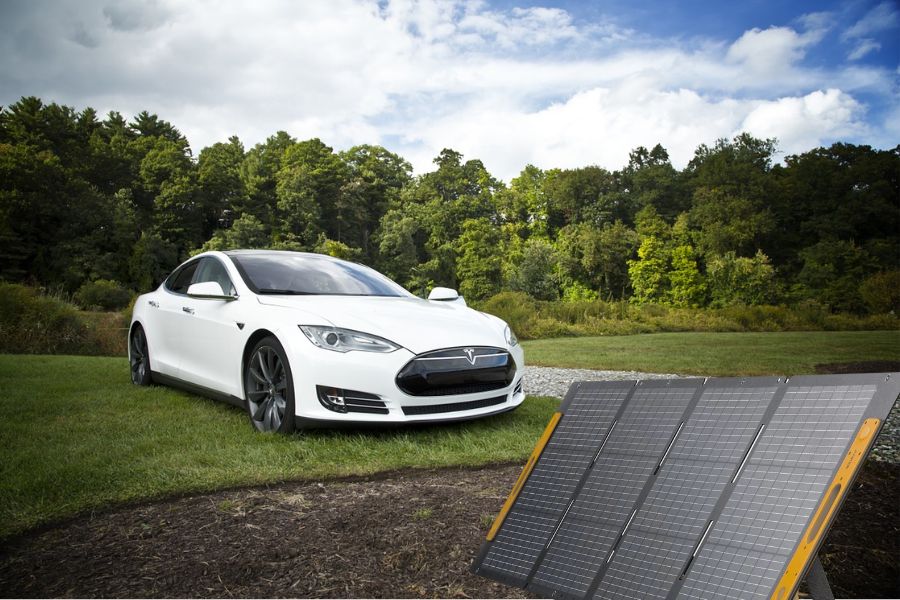
Yes, you can charge a Tesla with portable solar panels. Portable solar panels designed for charging electric cars, such as Teslas, are equipped with the necessary connectors and adapters to connect to the car’s charging port.
When you install solar panels, they harness solar energy and convert it into electricity, which then goes to the car’s battery. While the charging rate may be slower compared to larger fixed solar installations, portable solar panels provide flexibility and convenience, allowing you to charge your Tesla using clean energy even in remote locations or during outdoor activities.
How Many Solar Panels to Charge a Tesla Powerwall 2
A solar panel can generate enough power to charge a Tesla Powerwall in around 6 hours. It indicates that even with fewer solar panels, it is still feasible to charge the Powerwall.
The average home has enough roof space to accommodate 18-24 solar panels, suggesting there is no need to worry about having too few or too many panels for charging the Powerwall.
Solar power is reliable even in cloudy weather with sufficient sunlight exposure. Therefore, the exact number of solar panels needed to charge a Tesla Powerwall 2 will depend on individual preferences, available roof space, desired charging time, and the specific energy needs of the household.
Consulting with a solar panel installer or energy professional is recommended for a more accurate assessment.
Conclusion
In a sun-soaked land like Ireland, charging your Tesla with solar power is an innovative and eco-friendly choice. The number of solar panels you’ll need to juice your electric ride depends on various factors.
While it’s hard to pinpoint an exact count, a ballpark estimate suggests that around eight to ten solar panels should do the trick. However, keep in mind that the size of the panels, their efficiency, and the model of your Tesla will influence the equation.
For an accurate assessment, it’s best to consult a pro installer who can tailor the solution to your needs. So, tap into the power of the Irish sun, and let your Tesla ride on clean, renewable energy!
